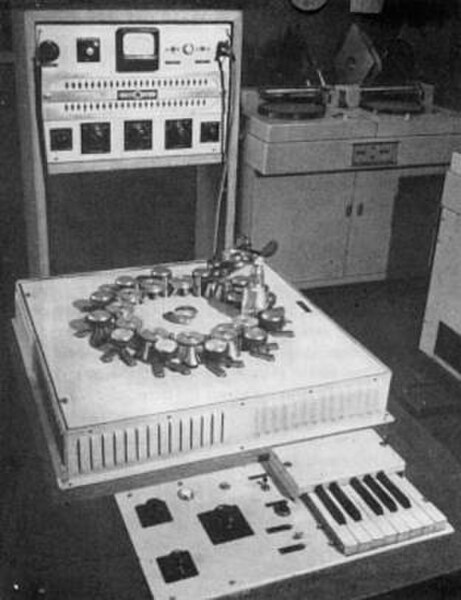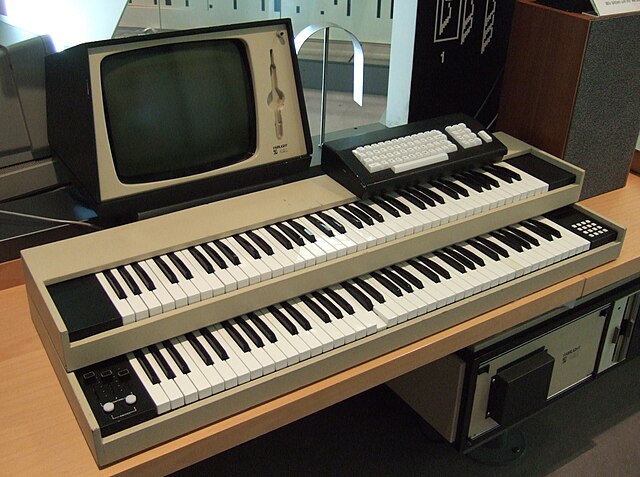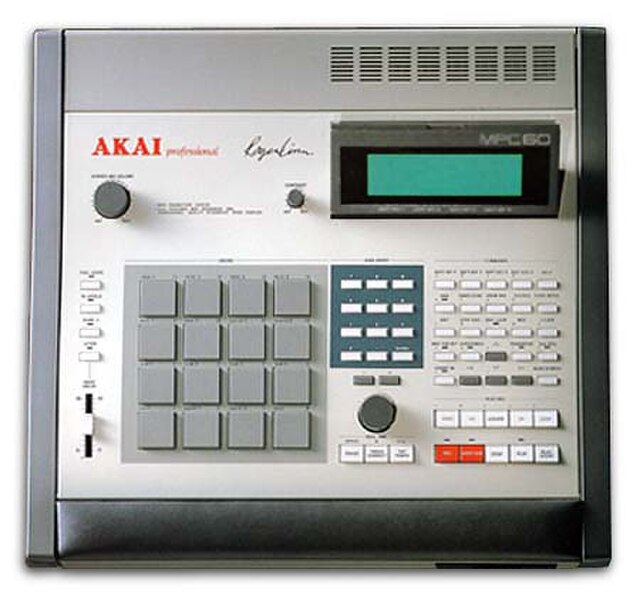In sound and music, sampling is the reuse of a portion of a sound recording in another recording. Samples may comprise elements such as rhythm, melody, speech, or sound effects. A sample can be brief and only incorporate a single musical note, or it can consist of longer portions of music, and may be layered, equalized, sped up or slowed down, repitched, looped, or otherwise manipulated. They are usually integrated using electronic music instruments (samplers) or software such as digital audio workstations.
DJ Premier selecting records to sample
The Phonogene, a 1940s instrument which plays back sounds from tape loops
The Fairlight CMI, a sampler and synthesizer released in 1979. The designers coined the term sampling to describe one of its features.
The Akai MPC, an influential sampler produced from 1988
Sound recording and reproduction
Sound recording and reproduction is the electrical, mechanical, electronic, or digital inscription and re-creation of sound waves, such as spoken voice, singing, instrumental music, or sound effects. The two main classes of sound recording technology are analog recording and digital recording.
Frances Densmore and Blackfoot chief Mountain Chief working on a recording project of the Bureau of American Ethnology (1916).
Emile Berliner with disc record gramophone
Singer Tatjana Angelini recording the Swedish voice of Snow White in Snow White and the Seven Dwarfs, 1938
Magnetic audio tapes: acetate base (left) and polyester base (right)








